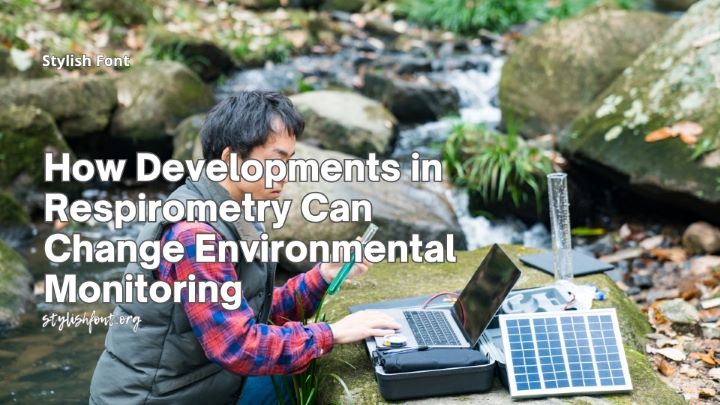Key Takeaways
- Respirometry technology is pivotal in environmental monitoring, offering precise data on microbial activity.
- By assessing biochemical oxygen demand, respirometry helps maintain water quality, which is crucial for both ecosystems and human health.
- Understanding how to implement and benefit from respirometry can lead to better environmental stewardship.
Introduction to Respirometry
Respirometry is a cutting-edge technology that measures the rate of respiration of living organisms. This method has become crucial for scientists aiming to monitor and improve the quality of various environmental facets. By evaluating oxygen consumption or carbon dioxide production, a respirometry test provides essential insights into microbial activity within ecosystems.
First developed for biochemical research, respirometry has become an indispensable tool for environmental scientists. Initially, it was utilized mainly in laboratory settings to understand cellular respiration processes. However, its application has expanded significantly over the years. Its accuracy and reliability make it an excellent choice for applications ranging from water quality assessment to air pollution measurement. As environmental challenges become more complex, the role of respirometry in providing actionable data becomes increasingly vital.
Importance of Environmental Monitoring
Environmental monitoring is a cornerstone of ecological preservation and public health. It’s essential for identifying contaminants, assessing pollution levels, and enforcing environmental regulations. This importance is magnified in the context of growing industrial activities and urban development, which pose significant threats to natural ecosystems. Beyond its scientific importance, monitoring also informs policy-making and community activism aimed at safeguarding natural resources.
The need for rigorous environmental monitoring has never been greater. With threats like climate change and pollution on the rise, the accuracy provided by advanced tools such as respirometry is indispensable for making data-driven decisions that benefit both ecosystems and human populations. Effective monitoring allows stakeholders to identify and address environmental issues before they escalate, ensuring a sustainable future for all.
How Respirometry Works
The effectiveness of respirometry lies in its ability to measure biochemical oxygen demand (BOD), a key indicator of microbial activity. BOD essentially quantifies the amount of oxygen microorganisms require to break down organic material in a given sample. During a respirometry test, oxygen consumption or carbon dioxide production rates are monitored to assess microbial metabolism. This data helps gauge the levels of organic material and pollutants in a sample, providing crucial insights for environmental management.
Technically, respirometry involves the use of sophisticated sensors and chambers that simulate natural conditions, enabling the precise monitoring of microbial respiration. The oxygen levels—or, in some cases, carbon dioxide levels—are meticulously measured to provide accurate readings. This further extends to the quantification of pollutants, making it a powerful tool for ensuring environmental compliance. Advancements in sensor technology have also enhanced the functionality of respirometry instruments, making them more user-friendly and reliable.
Applications in Water Quality Management
One of the most prominent applications of respirometry is in water quality management. The technique is instrumental in assessing the health of aquatic ecosystems by measuring the biochemical oxygen demand in water samples. This data helps identify contamination levels and monitor the efficacy of treatment processes. For instance, elevated BOD levels indicate a higher concentration of organic pollutants, which can be detrimental to aquatic life.
For instance, respirometry plays a crucial role in monitoring industrial effluents, thus ensuring compliance with EPA guidelines. Industrial facilities rely on respirometric data to optimize their waste treatment processes, mitigating the impact on local waterways. The ability to continuously monitor and adjust treatment methods in real time makes respirometry an invaluable asset for maintaining water quality.
Benefits of Using Respirometry for Environmental Monitoring
Respirometry offers multiple benefits for environmental monitoring. Its precision allows for the detection of minute changes in microbial activity, providing early warnings for potential issues. Early detection is crucial for timely interventions, which can prevent minor issues from becoming major environmental crises. The results are accurate and reproducible, making it a reliable choice for longitudinal studies and ongoing monitoring efforts.
In economic terms, investing in respirometry can be cost-effective over the long term. The technology reduces the need for frequent sampling and extensive laboratory analysis. Additionally, its non-invasive nature makes it an environmentally friendly option that aligns with sustainability goals. Unlike some traditional methods, respirometry doesn’t require harmful chemicals or destructive sampling, making it a greener choice for conscientious organizations.
Case Studies: Real-World Impacts
Several real-world examples highlight the effective deployment of respirometry in environmental monitoring. One notable example is its use in municipal wastewater treatment plants. Municipalities have successfully used respirometry to improve wastewater treatment processes, leading to more efficient and cost-effective operations. By optimizing microbial activities, these systems have become more efficient and less costly to maintain, ultimately benefiting public health and the environment.
Another compelling example comes from environmental research, where respirometry was used to study the impacts of pollutants on microbial communities. The findings, published in research on environmental microbiology, offer valuable insights into how contaminants disrupt ecological balance. This research has paved the way for more targeted and effective remediation strategies, showcasing the far-reaching impacts of respirometry in addressing complex environmental issues.
Challenges and Solutions in Respirometry
Despite its advantages, respirometry faces several challenges, including technical difficulties and high initial costs. These barriers can deter smaller organizations from adopting the technology, thus limiting its widespread application. The intricate nature of the equipment and the need for specialized training further complicate its implementation. However, continuous advancements pave the way for more accessible and affordable solutions.
For example, developing portable respirometers has made it possible to conduct on-site testing, reducing logistical complexities. Portable devices offer the flexibility needed for various field applications, from remote ecosystems to urban settings. Similarly, sensor technology advancements are continually improving data accuracy and reliability, making it a more attractive option for various stakeholders. These innovations are gradually lowering the entry barriers, making respirometry more feasible for a broader array of applications.
Future Trends in Environmental Monitoring
The future of environmental monitoring is bright, with technologies like artificial intelligence and big data analytics poised to revolutionize the field. These advancements will enhance the capabilities of respirometry, making it even more powerful and efficient. AI algorithms, for instance, can analyze complex respirometric data sets, identifying trends and anomalies that might be missed by human observation.
One exciting trend is the integration of AI algorithms to analyze respirometric data. This will allow real-time monitoring and predictive modeling, providing immediate insights and proactive measures to mitigate environmental issues. Predictive models can forecast potential issues, allowing for pre-emptive actions that save time, resources, and ecosystems. Another promising development is the use of IoT devices for continuous monitoring, enabling a more holistic approach to environmental stewardship. These connected devices can provide a constant stream of data, offering a more comprehensive view of environmental conditions and facilitating prompt responses to any detected issues.





